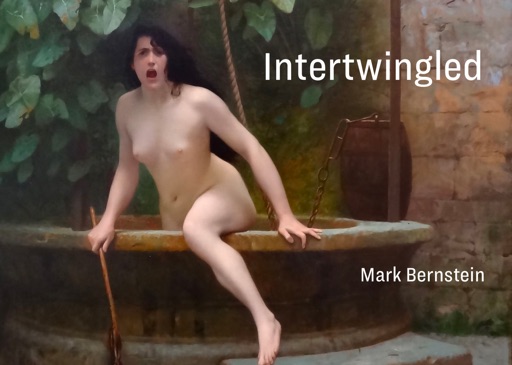I’m trying to finish Thinking In Tinderbox, not least to clear the decks for the next book. But there remain some chapters that just don’t work.
The worst of these concerns the new streaming facilities for Tinderbox actions. These remain (a) very powerful, and (b) unloved. I’ve tried to show they’re (now) easy to use. That wasn’t always true, because there were odd corners of the language into which you could wander and there were dragons. Now, there aren’t. But that’s not enough.
So, I’m turning Chapter 9 into a short essay on languages and notations, with special attention to the Tinderbox action language and the stream notation. Fair enough! But I find I need to know more about the idea of a language, and then the idea of an abstract language.
And so, I made friends with my old graduate school library today. It was sort of amazing: I’ve been away from Widener Library for something like 35 years. The card catalog is gone. The entrance to the stacks it gone. The IT security is insane: it took me an hour or more to set up, and then I had to use my cell phone for internet.
For example: did you know that one of the oldest bits of writing we possess — a bit that was written only a few generations after writing was invented — is a word list translating Sumerian and Elamite? As I understand it, we aren’t quite sure whether what we have is a teacher’s syllabus or some student notes.
But, man: nine hours of intense ancient history, back in the Harvard’s Baths Of Caracalla. Half of everything is exactly the way I left it. The other half is immensely changed, at incredible expense. Those rickety elevators: gone! The light well is now an elegant reading room. The vast reading room is now comfortable, the floors are cork, and the tables are crowded! But now there are auxiliary reading rooms, and those have armchairs. (My complaint about Widener was always that it was a Puritan library that expected you to sit on a cold glass floor in the dimly-lit stacks. Those floors are still not great, and they’re even lower than they used to be when I was 23. Physics and age are what they are. Now, they’ve accepted that it’s nice to be comfortable as you read.)
It’s great to know that, whatever the book you’re reading happens to cite, that reference is bound to be in the stacks. My heart sank when I really wanted to read “Anonymous. Excavations 1985-1986, Iraq 49”. Yikes: nothing at all for the search engine to go on. I assumed this would need a senior reference librarian, perhaps a domain specialist. But I gave it a shot, and it called up the correct reference one the first go.









